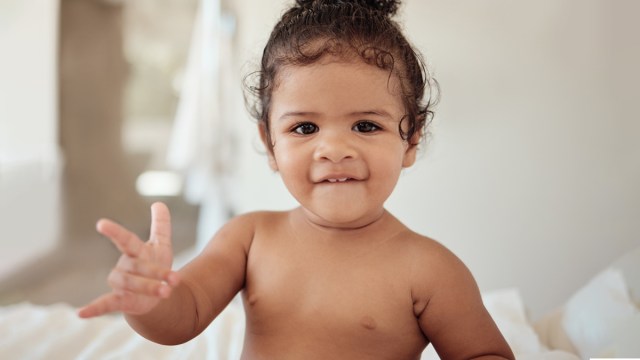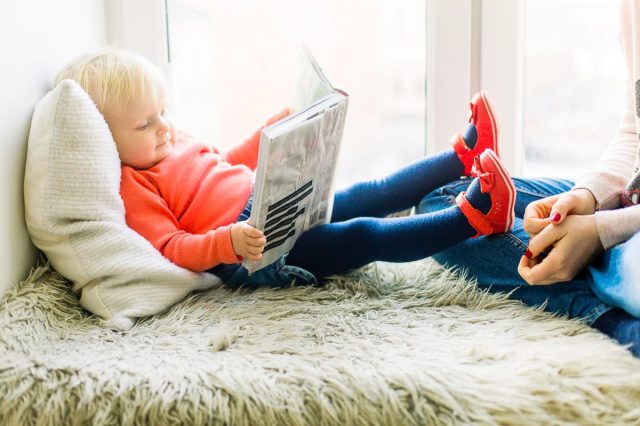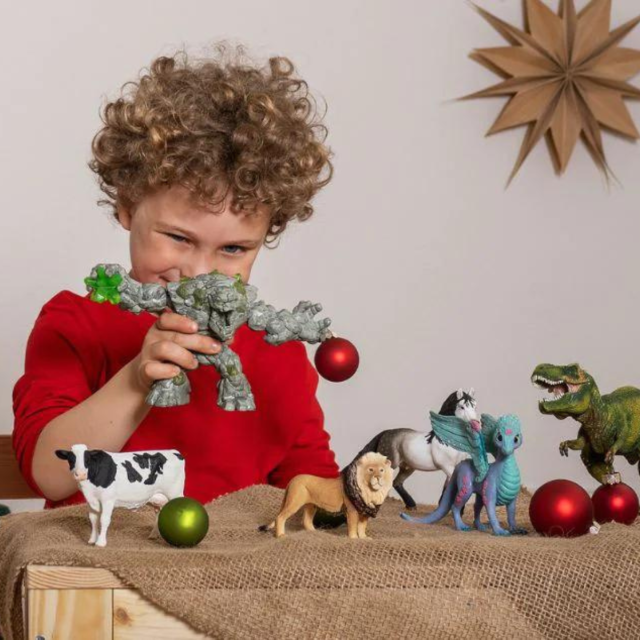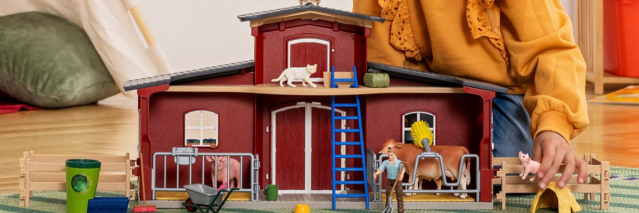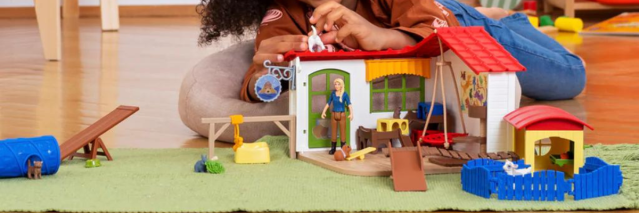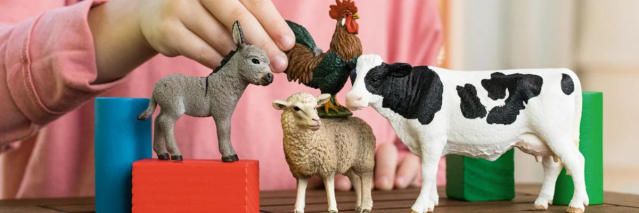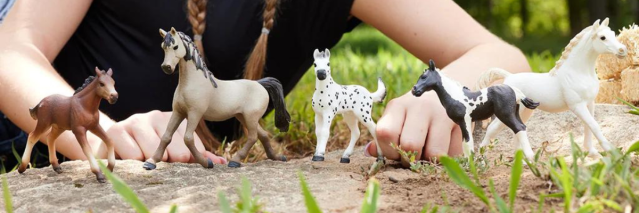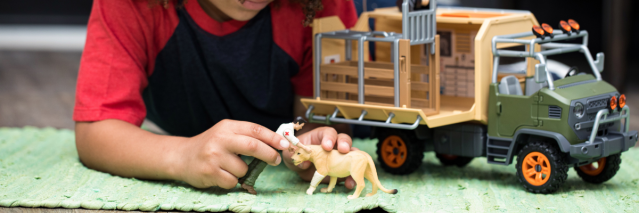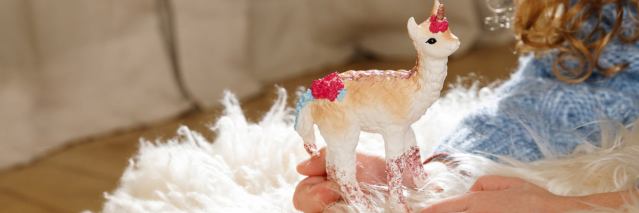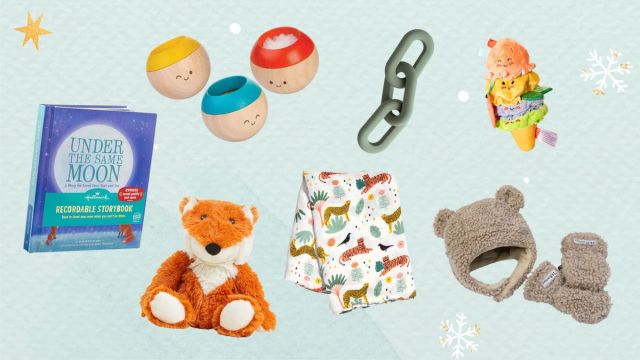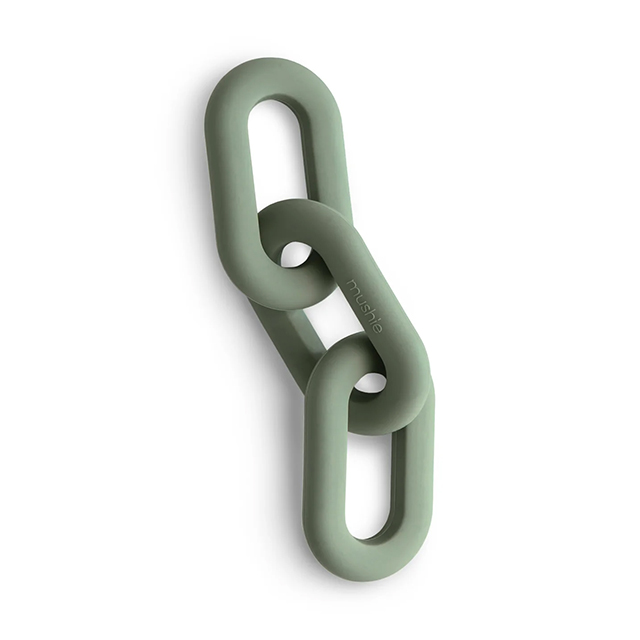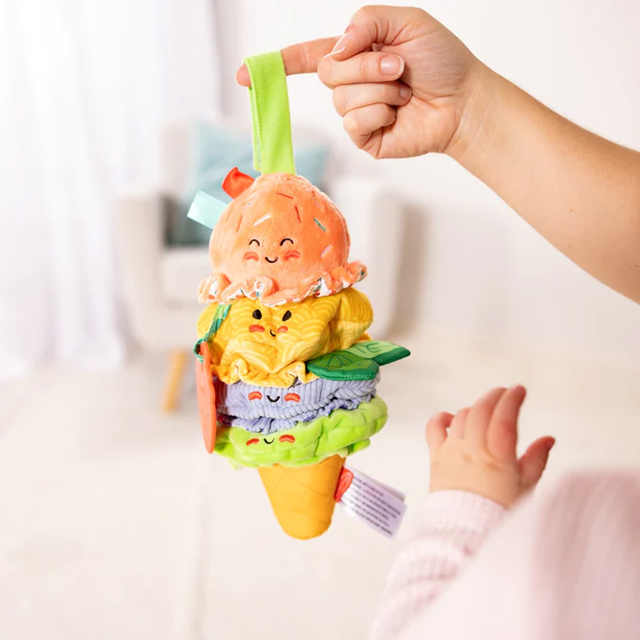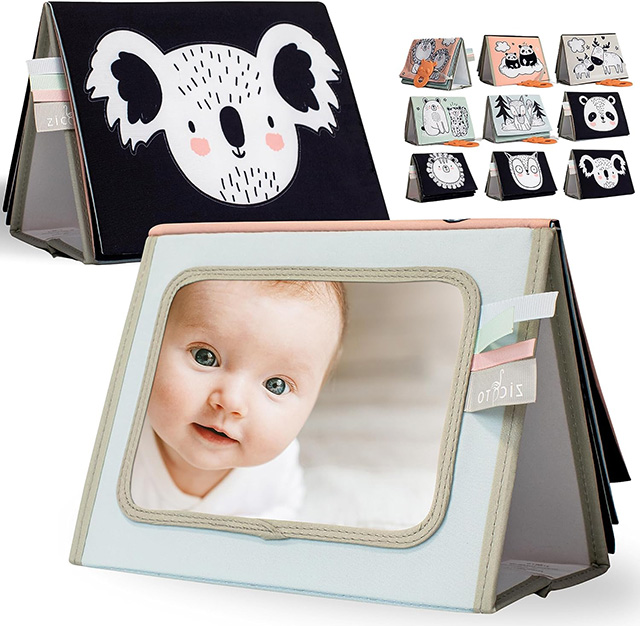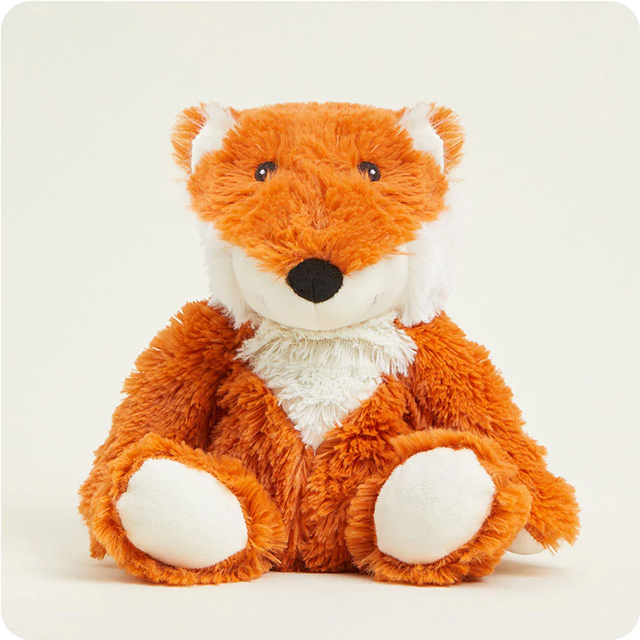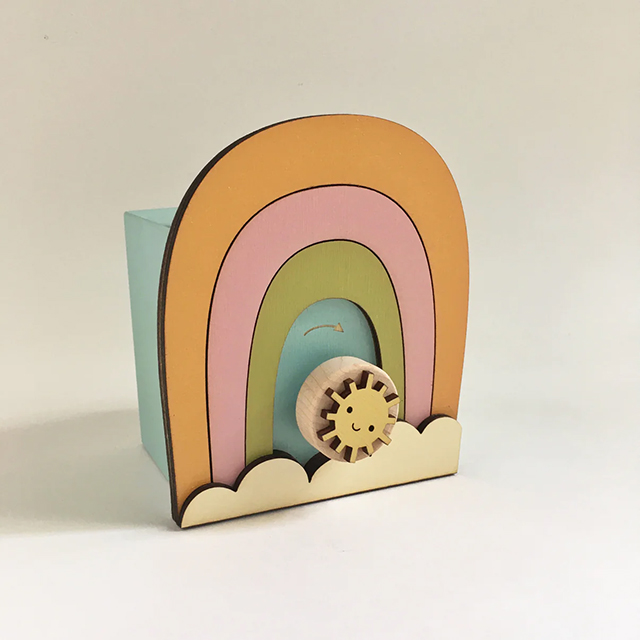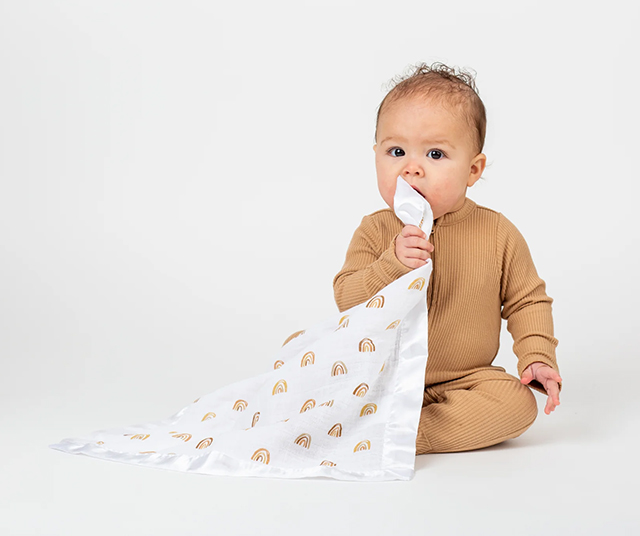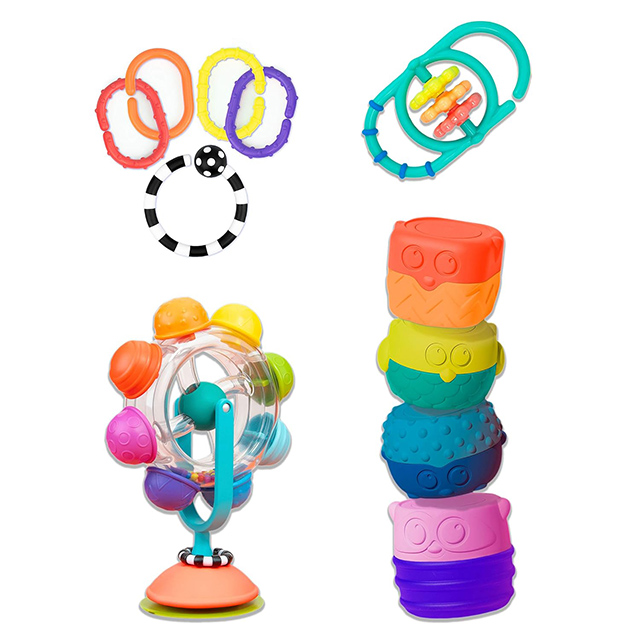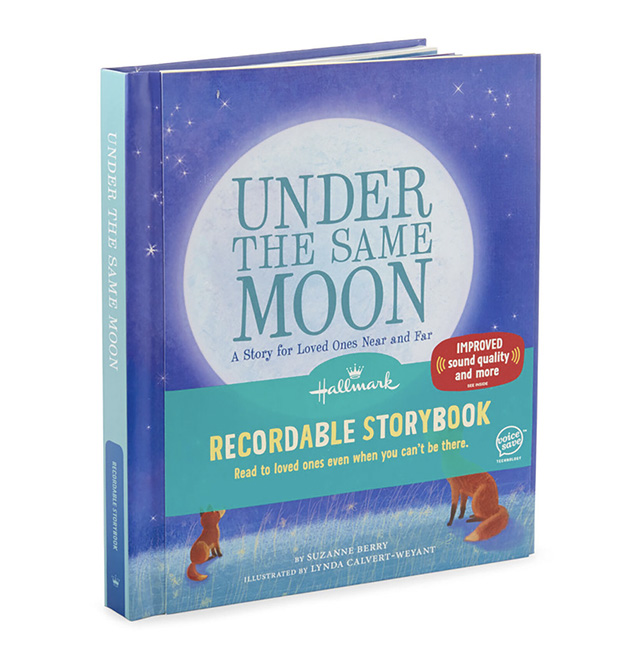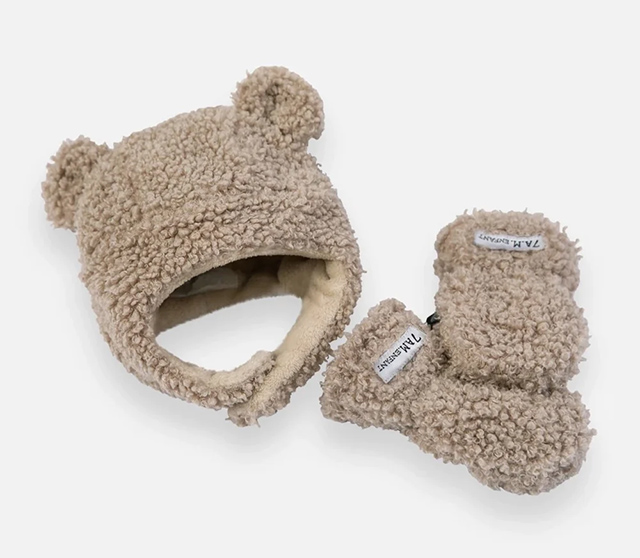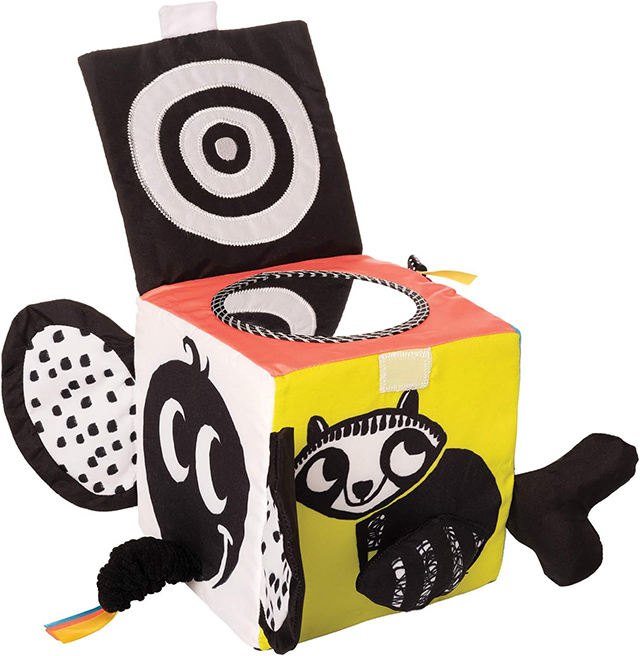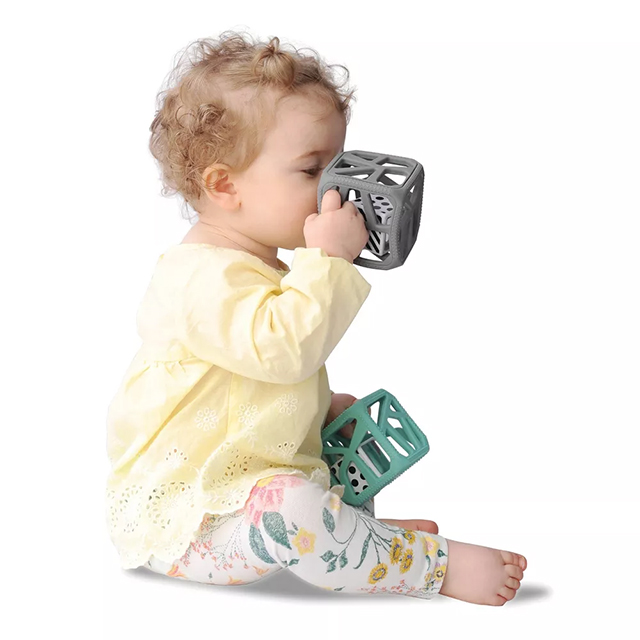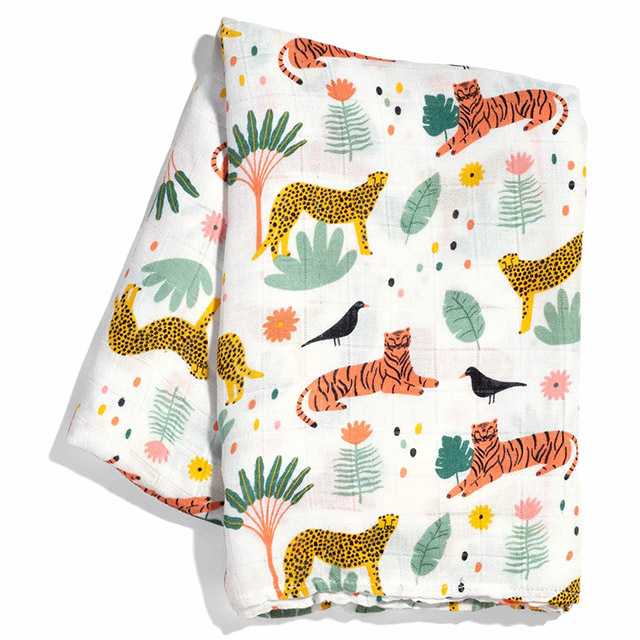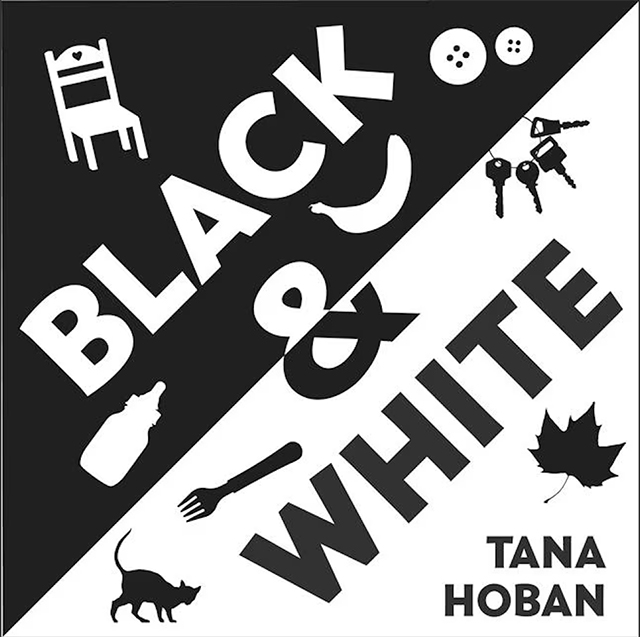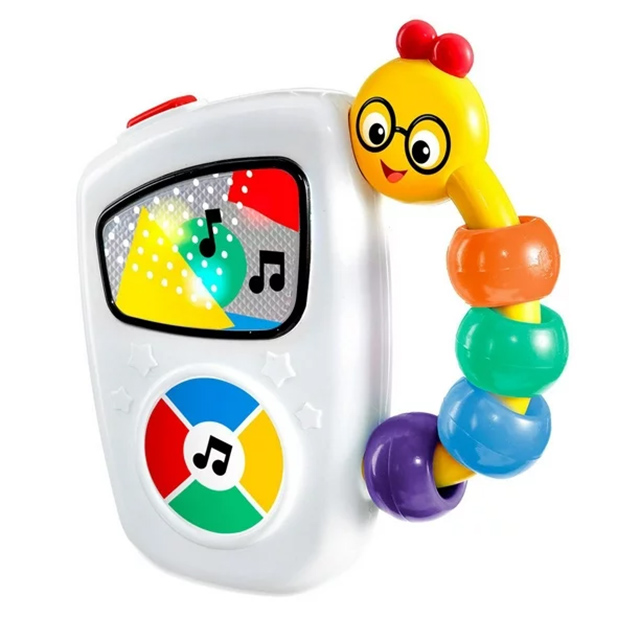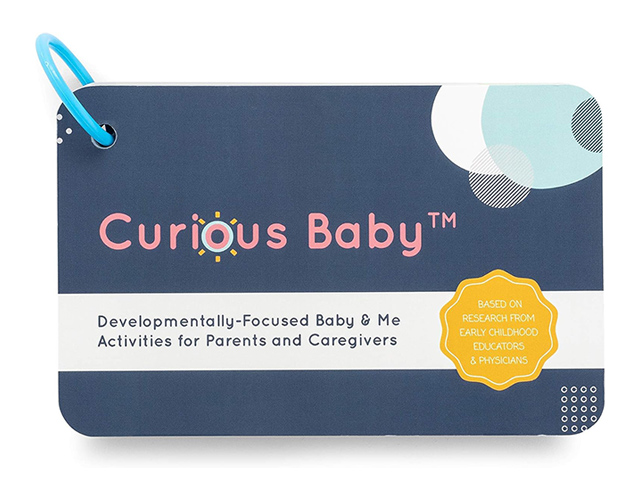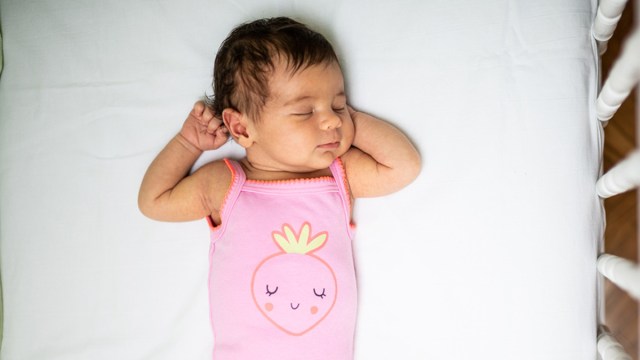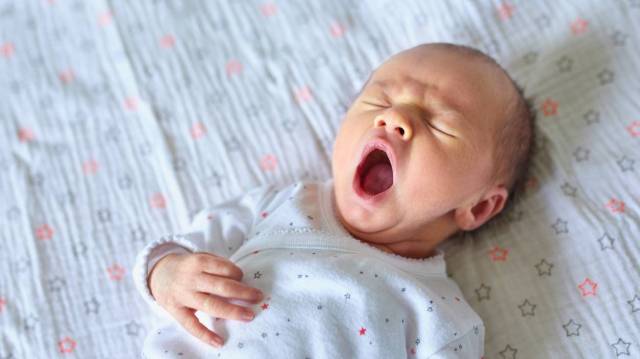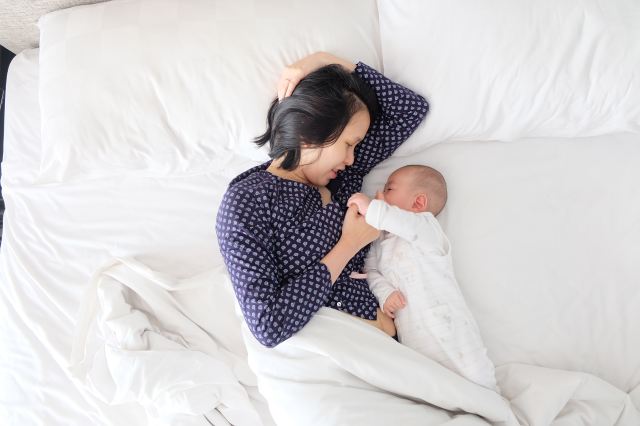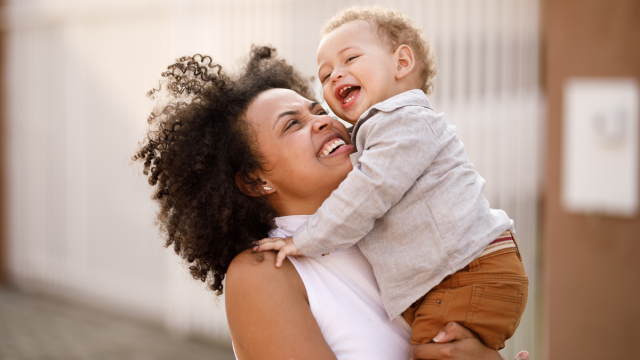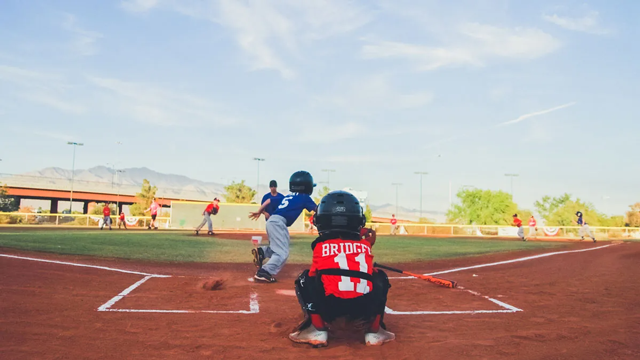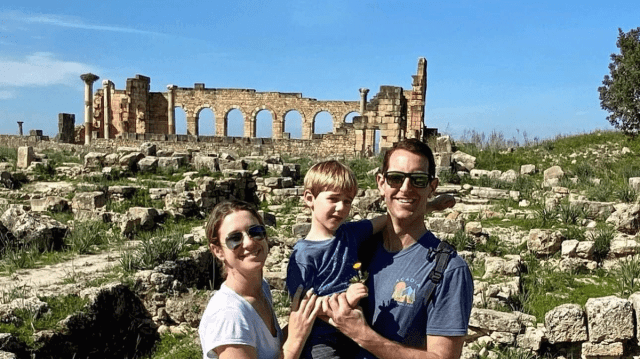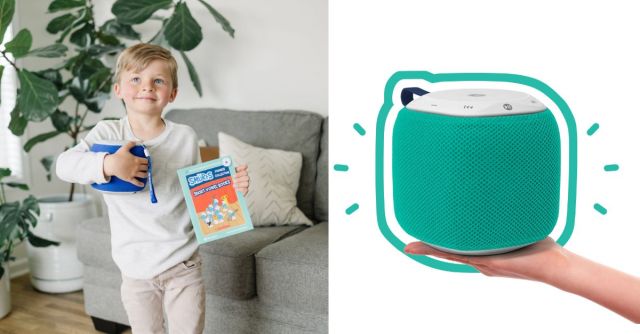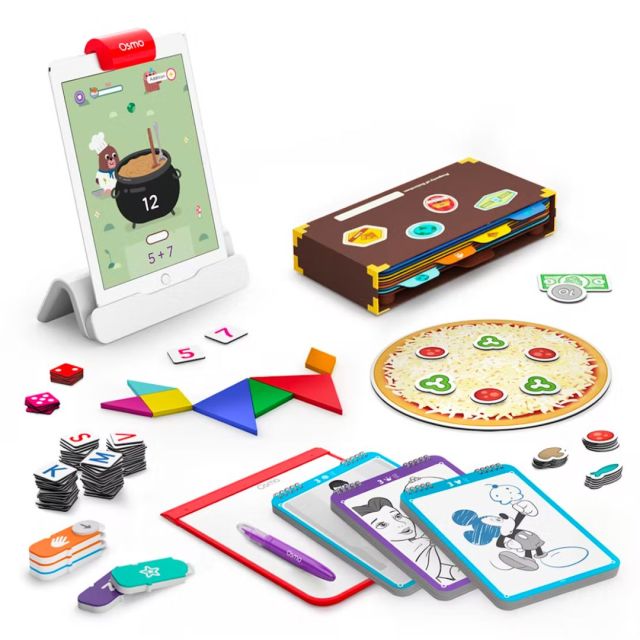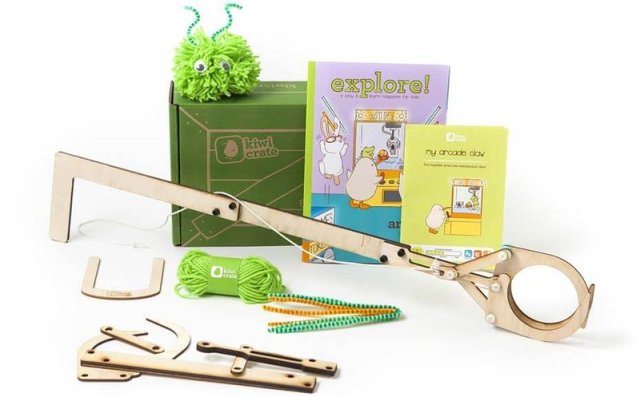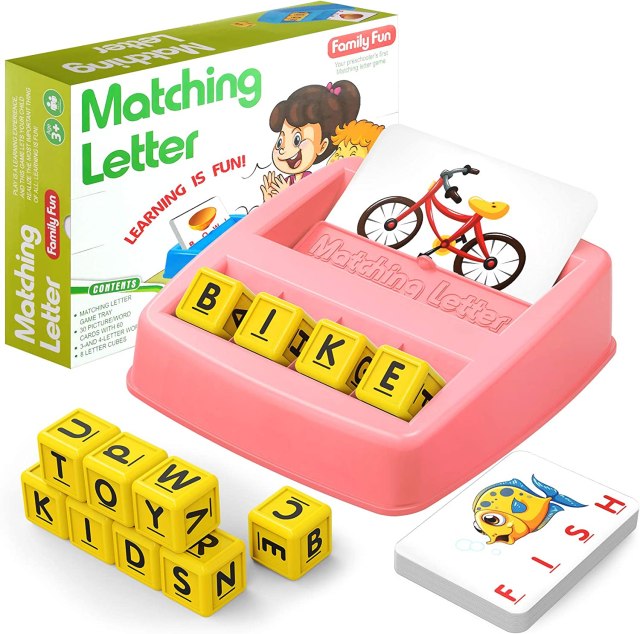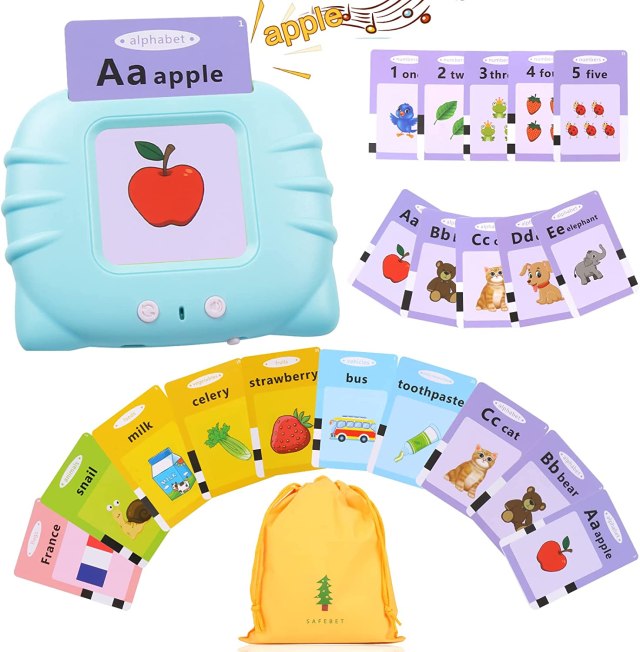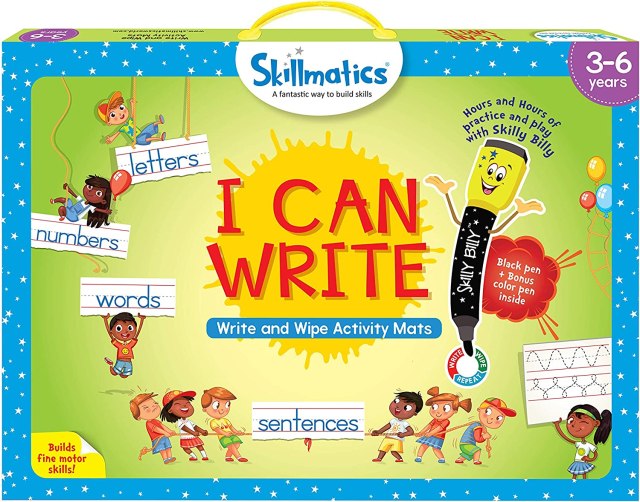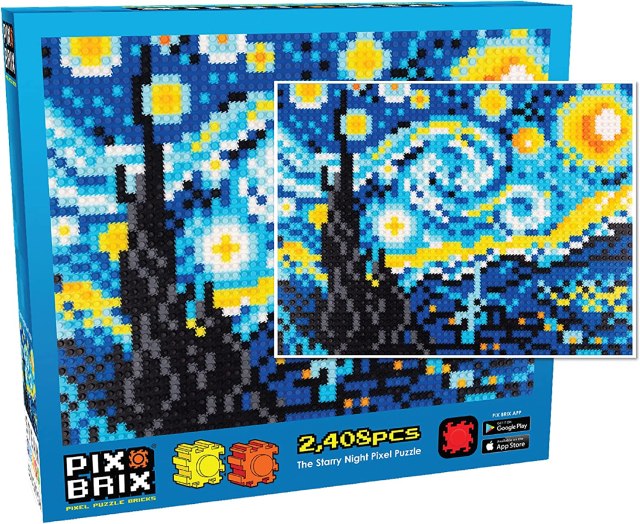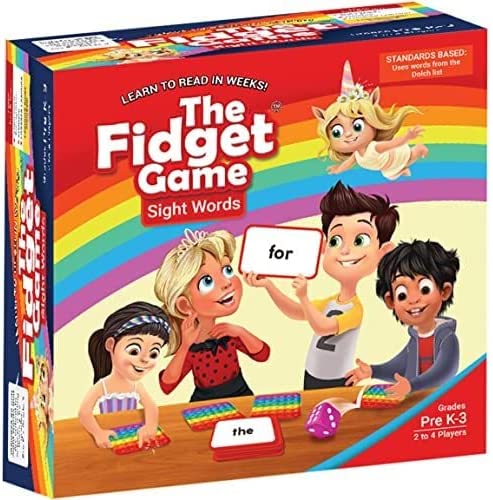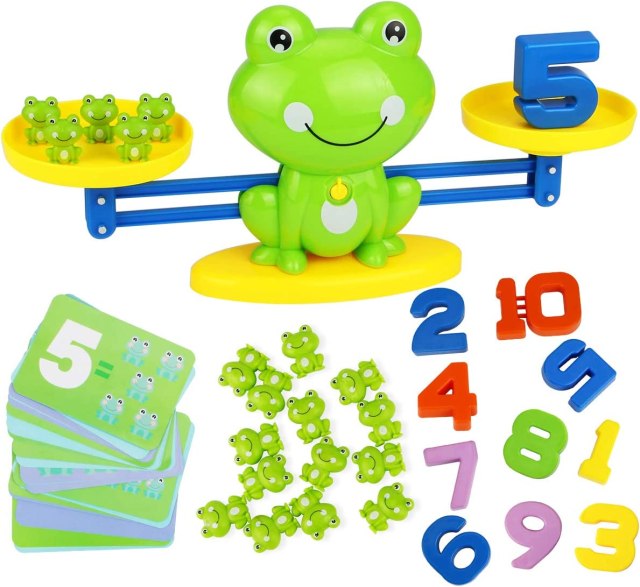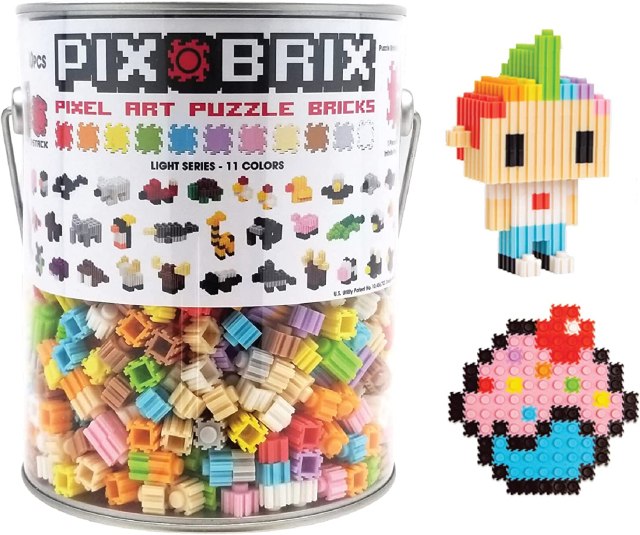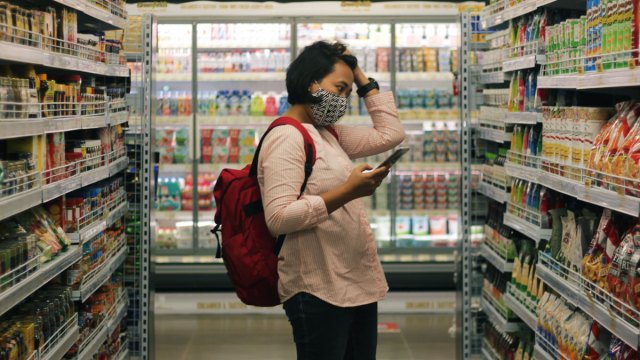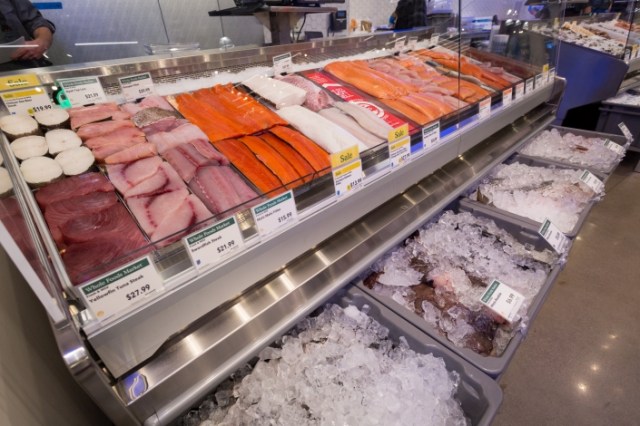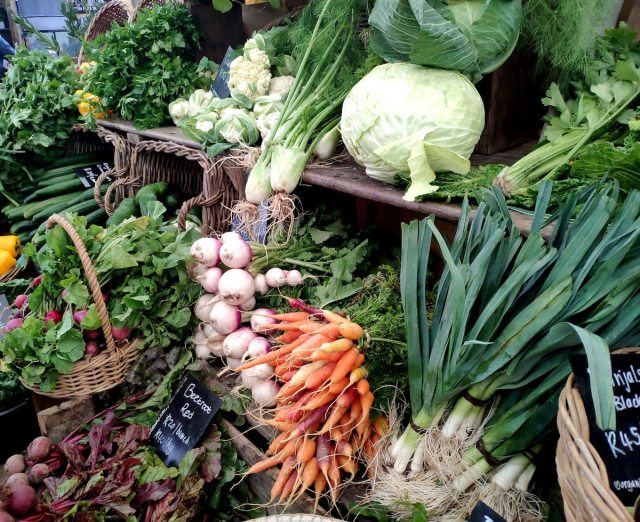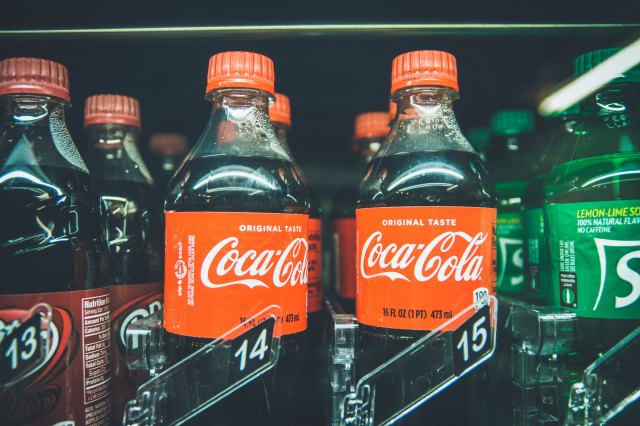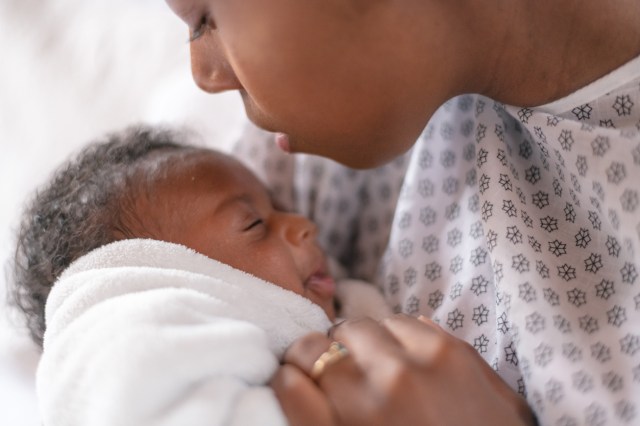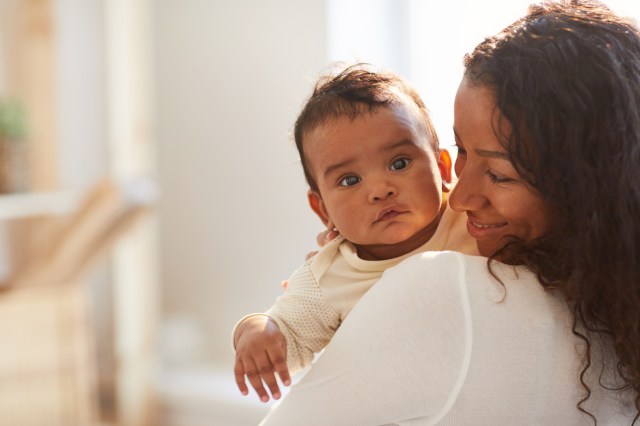They may not be able to talk, but infants are constantly communicating with the world around them, and boy are they eager to let parents and caregivers know what they want at any given time. As a parent, it won’t take long to decipher your baby’s code—you know, those high-pitched gurgles that tell you your little one is hungry, or the eye rubs that let you know nap time is near. When you miss a subtle signal or two (and you will, trust us), you’ll be made well aware by your baby’s not-so-subtle cries. That’s when you think: Wouldn’t it be great if they could TELL me what they needed? That’s why some parents turn to sign language for babies as a more consistent way to communicate with their kids before they know how to “use their words.”
What is baby sign language?
Baby signs are very simple hand gestures, often based on American Sign Language (ASL), that help babies who aren’t yet speaking to communicate basic needs to hearing parents. Each sign corresponds to a word that is super relevant to an infant’s life, like wanting “milk” or needing “help.” Teaching your baby sign language allows your child to communicate their biggest needs and make sure they’re met, explains Laura Payne, MDE, a baby ASL expert and teacher. This lessens frustrations for both kids and parents and builds trust.
Payne explains that teaching your baby a few useful signs and building from there is a wonderful way to introduce them to a beautiful language while also helping them express their wants and needs throughout their daily routines. In doing so, you can consistently meet those needs, strengthening your attachment and boosting your confidence as a parent.
When should you start teaching sign language to your baby?
When are those adorable little hands ready to start forming signs? The American Academy of Pediatrics (AAP) suggests teaching your baby sign language beginning at 6 months. This is thought to be a good window because developmentally infants are learning how to gesture around this time, but this milestone really kicks into high gear at the 8-month mark. Payne stresses that you’re never too early or too late to start. “Babies are born needing to communicate with us,” she says. “So you can start at 6 months or you can start when they’re learning to walk.” You know your baby better than anyone, so give it a go when you feel ready.
5 of the best signs to teach your infant:
The best way to teach your baby sign language is to choose signs that are important to you and your family and ones that you use a lot. Payne suggests starting with “high-functioning” words because they help your little one communicate their basic needs.
1. Milk
While keeping your hand steady in front of you, form the shape of a “C.” Then open and close your hand twice, ensuring your thumb closes over your fingers. You can start modeling this sign before your baby is old enough to do it themselves, and once they’re familiar with the sign you might see their eyes widen with excitement when they realize it’s milk time.
2. Eat
Make a rounded “O” with your fingers and then flatten your fingers out. Turn your fingers to face your chin and move them to your lips like you’re eating.
3. All Done
When signing “all done,” start with your palms facing in and the top of your hands facing out. In a quick motion, turn your palms to face out, and now you’re all done. Remember that you can use this sign in all kinds of situations, like during play and at the park—it’s not just for mealtime.
4. More
Bring your fingers and thumbs to touch and flatten both your hands—like the flat “O” when signing “eat.” Next, tap your fingers together and then pull them apart several times. Remember that your baby could be attempting this sign in any number of ways, from clapping their hands to tapping a single finger into the opposite palm.
5. Help
Your dominant hand is going to sign the letter “A” in ASL, or you can remember it as a thumbs up. Make a flat palm with your other hand and place it under your dominant hand. Raise both hands together to sign the word “help.”
How do you teach your baby sign language?
Payne recommends signing while saying the word at the same time, always remembering to embed the word in context. The next time you and your tot sit down to eat, this can mean signing the word for “eat” while using it in a sentence like, “It looks like you love to eat bananas” or “I see you eating those sweet potatoes.” This gives your little one the context of what the word means supported by the sign language. “I’d also recommend using statements over questions when you’re modeling [sign language],” Payne advises.
It’s important to incorporate signs into your daily life and be sure to repeat them, according to Baby Sign Language. Research shows that repetition can be critically important for learning, so try to sign before, during, and after an event, like a meal. Another great way to help your baby learn to sign is when you read together. Payne says to sit your child on your lap so they have a clear view of your hands and the book. This way your baby can see you sign words you’re introducing (or already using) as you read.
What are the benefits of sign language for babies?
As far as baby sign language goes, there are benefits for everyone involved. Babies can express their thoughts and needs more effectively, which means less frustration and fewer tantrums due to communication barriers. It also saves parents a lot of time and frustration. If your baby signs “eat” you’ll know to prepare their favorite sweet potatoes instead of jumping into trial-and-error mode, changing diapers and searching for favorite Loveys. Teaching your baby to sign sets everyone up for better communication.
Another benefit is that learning sign language is in line with your infant’s physical development. Payne says the muscles in your baby’s arms and fingers develop faster than those in their mouth, throat, and nasal cavity, so they can sign long before they actually say their first words. Some folks believe that using sign language with babies can delay their verbal communication, but research has shown just the opposite. According to recent studies, it can actually facilitate rather than hinder the development of voice language, per The National Library of Medicine. As Payne sums it up, “language supports language.”
Since sign language is multisensory—communicating through seeing, hearing (saying the words you’re signing), and creating movements—it also nurtures your kid’s cognitive development. “Children feel their body moving and it allows for a multisensory approach, which helps them learn best,” says Payne. And if all that wasn’t enough, signing also helps to strengthen the bond between a child and their parents or caregivers.
What if your baby seems disinterested?
All children learn at a different pace, so if you feel your infant isn’t picking up the signs you’re putting down, don’t panic. There are a number of potential causes if you’re feeling discouraged, like maybe your baby just isn’t ready to start signing, or they’re already signing but you haven’t realized or aren’t positively reinforcing their attempts. These are important pieces of the puzzle to consider. When your baby does start to show interest, positive reinforcement is key to building their self-esteem, which encourages them to sign more.
If you’re concerned about your baby’s ability to learn sign language, Payne suggests you seek out a professional for help. “Reaching out to an expert in the field can help parents and caregivers troubleshoot.”
